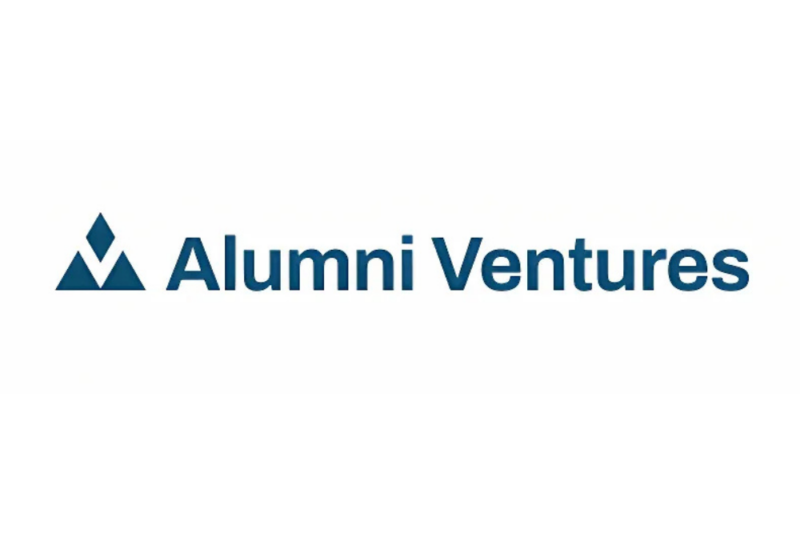Tell Us About Your Journey
I was born in Switzerland. At around 19 years old, I moved to United States for college in Ohio. That was my journey in the United States to start. I didn’t actually plan on staying, but then I got all these opportunities for a master’s degree, which I moved to Virginia for. Started my master’s, turns out I was pretty good at building stuff. I got an opportunity to do a PhD, and I ended up being in a big research lab doing essentially tissue engineering, which is something I fell into.
My background is optics, and I ended up combining optics with tissue engineering, and that was actually my PhD as well. Essentially imaging cells, individual cells in tissues as they are growing is a new modality that we developed during my PhD.
And so that was a big part of my mid-20s, and I then got the PhD, and my mom is a professor, and so it felt natural for me to also maybe become a professor in the future. But always intrinsically inside, I could tell that I was never really a professor. I couldn’t see myself doing that, writing research papers. I wanted to create something that people use and changes their lives. And nevertheless, I got an opportunity to be a postdoc at Harvard Medical School, which is why I ended up being transported over to Boston. So my wife, my then girlfriend and now wife, we decided to move to Boston for that. I did that for only about a year until I ran into a guy that started his company called eyeNetra. That was actually how I ended up entering the world of startups.
What Is the History of Eyebot?
The history of Eyebot started about 10 years ago. In fact, when I ran into this guy that just started his company called eyeNetra, it’s the first smartphone-based vision exam that existed and came to market. My background being optics, and in the past, I worked on mammography and tomography. My background is optics, and so it was just a really good fit for me to join that company.
I joined and actually, I knew very little about eyes, and I quickly caught up into the entire industry of vision care and eye care. We built tons of prototypes, and every time we built it, we saw the good that we could do to people, our testers. We tested people that were rich, poor, all sorts of backgrounds. The resonating thing that we always saw is that people just can’t access vision care. It’s too costly. They don’t have time. They don’t have time to schedule. They don’t have time to go somewhere and plan ahead for two, three months, maybe you have three kids, and they just don’t have time to go see that doctor.
That was true 10 years ago, and it’s still true today. In fact, it’s worse today than it was 10 years ago. That was really, for me, the point when I started in this industry. The problem that we had at the time was that smartphones were in everybody’s hands. We were very excited about the possibility of using smartphones to change vision care and to augment it and make it better. But we realized that the biggest problem is not technology. It’s actually the interface itself. The thing that people interact with is what nobody could actually get past. That was the big inspiration back then already that we realized we have to fix the interface. It’s the interface that people actually need to have solved such that you just need to push a button and it happens automatically for you. That was the big inspiration that we had back then. I carried along this idea many years, was marinating in my head until three years ago, we decided to start this.
What Motivates You?
What motivates me and also the team? I think there’s a couple of moments, one, especially since the beginning of this company and into the future. Our mission is to make vision care accessible to everybody equally. The equally part is important here because you have people on the wealthier side that actually have far easier access to vision care versus the lower third of our population with access. It simply doesn’t have the means or the time. People working 80 hours a week, maybe in the back of a kitchen, they don’t have time to go to the doctor and get new glasses.
What motivates us is the ability to create something that anyone can use, and it only takes them 90 seconds of their time. They just need to walk up, push a button, and it’s done for them. To us, that was really at the core of the mission. Eyebot is we want to make vision care accessible to all.
We put our first kiosk out that were ready for testing, we put them out in shopping centers, and we saw exactly that. We had anyone really use it. We got young people using it. Our oldest confirmed user is 88 years old. We had an entire, essentially, spectrum of people. And when we saw these things, we knew we’re on something very big. I still get goosebumps from thinking about this because we think we have actually an interface and a technology that allows us actually getting to our mission.
What Challenges Have You Faced?
We have, of course, some of the challenges that hardware companies do have. It’s like we can’t iterate as fast as our software counterparts. I would say that’s one of the harder things to solve. But we know from the very beginning, this was a decision we made that we’re building dedicated technology for retail and for clinical scenarios. And that allows us to really provide solutions that are very tailored to the situation.
So in the future, people can just walk into a store, a button, buy glasses. In the future, people can just walk into Kroger, get an eye scan, get a prescription, buy glasses. And that’s only possible if you actually bake on a new hardware product. And so we decided early on that’s the way to go. And all the software in commons the pure software in commons, are going to die on that hill.
What Advice Can You Offer to Other Entrepreneurs?
I was always on the sidelines, always looking at some of these CEOs or company leaders, and I was always thinking, I want to be that. For many years, I always took to the sidelines, and I was worried it may be too complicated or maybe too stressful or it’s never the right time. I would call myself even a Wantopreneur. That’s a terminology that you can give people that just want to be an entrepreneur, but they just never have the guts to do it.
The reality is there’s never a good time. It will never be a good time. In fact, we started this company when my third child was born on the same week. So financially or logically, it’s the worst time to actually start a company. And we still got to this point. It really comes down to just really wanting to do it and treating it like a job. That’s a really important one. It’s maybe not a 9:00 to 5:00 job, but you have to treat it like a job. You got to take it serious. And then in the end, just do it.
Where Do You See Eyebot in 3-5 Years?
In three to five years, we see Eyebot as being the connective tissue between retail and also the clinic. That’s the friction that’s happening right now. By extent to that, we see Eyebot essentially in the future of being a chain of locations that anyone can get to. It could be at Kroger, it could be at CVS, it could be at the shopping center, it could be at colleges. That’s where you should expect to see Eyebot this in next year as we roll out. In other words, it’s essentially the RedBox of vision care.
What Value Has Gesmer Updegrove Provided to Eyebot?
Gesmer has been with us since the very beginning, actually. We founded the company three years ago, and in fact, we incorporated through Gesmer. And also we work very closely with the IP team here as well in trademarking. In fact, we’re two blocks away. And that’s also what’s so great about Gesmer. I’ve walked you over here numerous to talk with some of the attorneys here and the resources to discuss our IP portfolio and trademarking strategy. And it’s just fantastic to have this next door.
Why Go With Gesmer?
So we go with Gesmer because they’re extremely smart, very experienced in all the entire range of startups, incorporation to IP, to hiring, to all sorts of strategies. They did all our IP research, trademarking research, filing. They’re always on the ball. On top of that, besides being extremely smart and knowledgeable, they’re also super down to earth, and we like to hang out with them.
Check out some of our latest publications:
- NVCA FORMS: What Are They and Why Should You Care?

- What is a Provisional Patent Application?

- CLIENT ALERT: Supreme Court Rejects Rule Requiring Majority-Group Plaintiffs To Meet Higher Evidentiary Standard for Title VII Claims

- Executive Order Seeks to Eliminate Disparate Impact Liability in Title VI & VII Enforcement Actions

- Alumni Ventures

- CLIENT ALERT: Appeals Court Blocks Preliminary Injunction On Key Provisions of the DEI Executive Order

